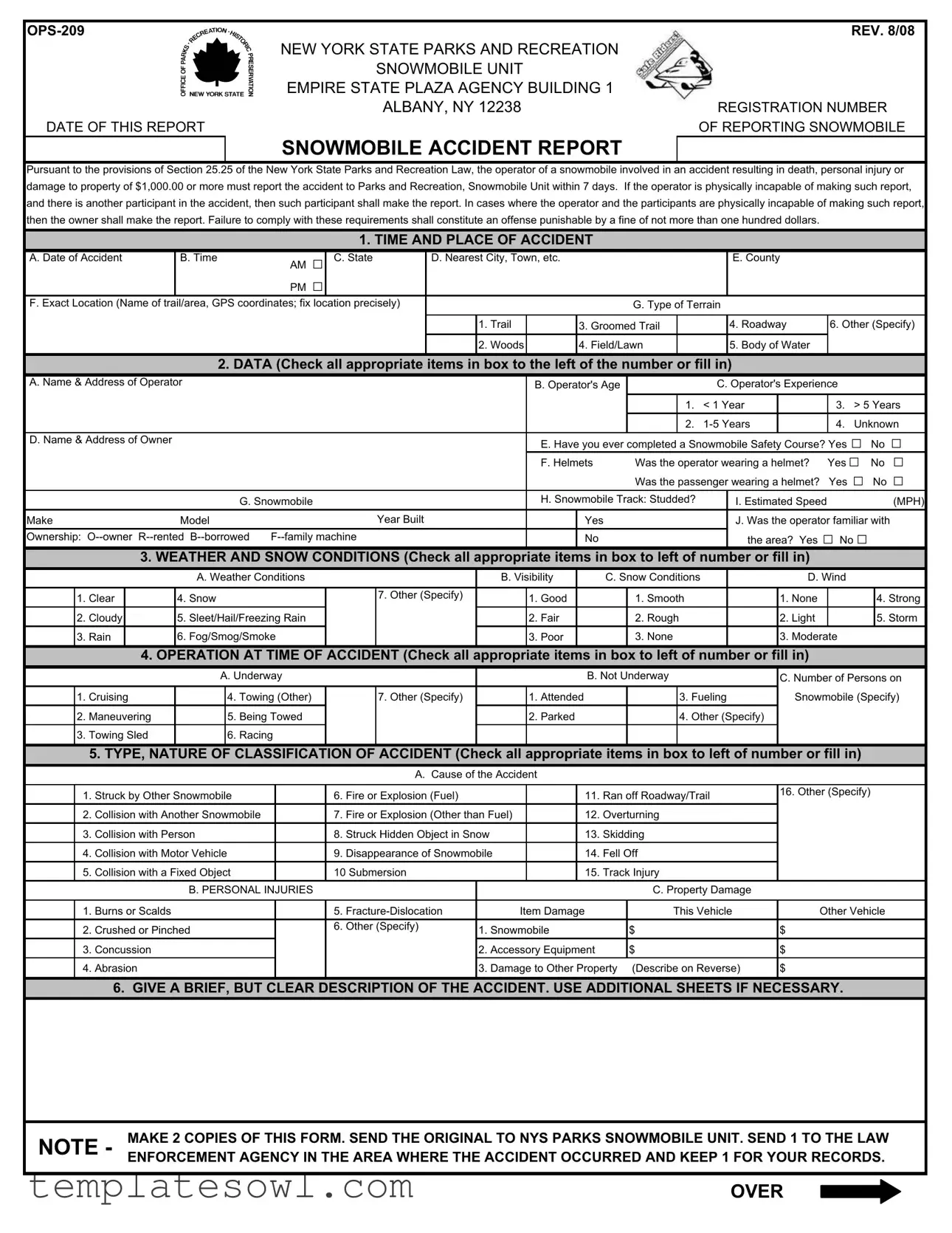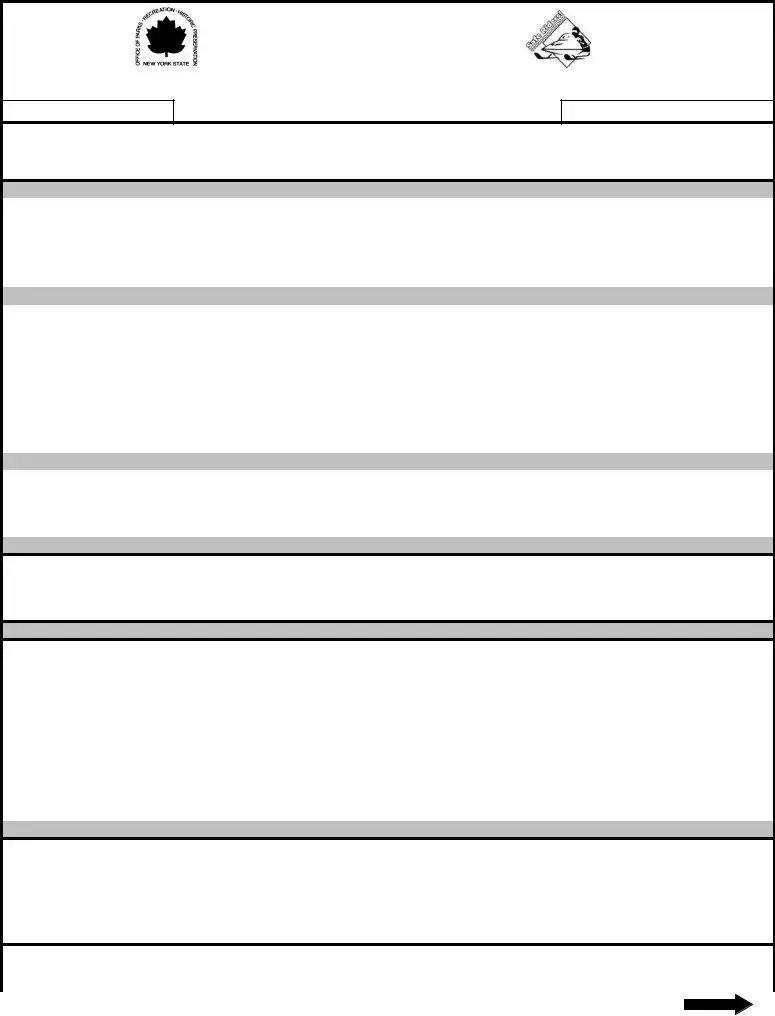Completing the Ops 209 form accurately is essential for reporting snowmobile accidents. However, many individuals make common mistakes that can delay processing or result in incomplete information. One frequent error is not providing an exact location for the accident. The section requires precise details like trail names or GPS coordinates. Without this information, it becomes challenging for authorities to follow up on the report.
Another common mistake is failing to check all relevant boxes regarding operator and snowmobile data. Many people overlook crucial details such as the operator's age or experience. Omitting this information can lead to a lack of context about the situation during the investigation.
Providing incorrect or outdated contact information for the operator and other involved parties is also a serious issue. Accurate names, addresses, and phone numbers are vital for any follow-up, yet they are often filled out incorrectly or left blank. This oversight can hinder communication between local authorities and the individuals involved.
Not including a clear description of the accident is another significant mistake. This section asks for a brief summary, which should detail the events leading up to the incident. Many people either leave this blank or write vague descriptions, making it difficult for investigators to understand what happened.
Inaccurate reporting of weather conditions can also mislead the authorities. Individuals often skip this section or provide general statements. The weather could significantly influence the accident's cause, so missing data here could affect any subsequent analysis.
Failing to mention all participants in the accident is also prevalent. Some forms only list the operator and fail to include passengers or witnesses. It's essential to note all individuals involved as this can influence liability and assist in the investigation process.
Another mistake occurs in the financial damage assessment section. People sometimes estimate property damage inaccurately, which can lead to complications in insurance claims later. It is crucial to provide accurate and detailed evaluations of damages incurred.
Finally, failing to sign and date the form is a critical error that many individuals overlook. The declaration under penalties of perjury signifies the importance of the information provided. Omitting a signature can lead to the form being returned and can delay the entire reporting process.


